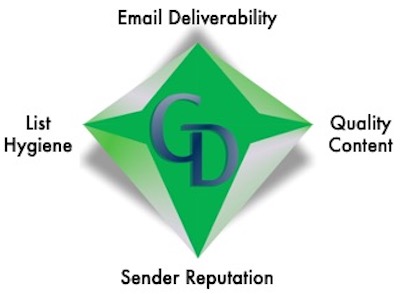Mastering the Art of Email Deliverability: How to Avoid the Dreaded Spam Folder

In today's digital age, email remains one of the most effective communication channels for businesses. A well-executed email marketing campaign can deliver impressive ROI, build brand awareness, and foster lasting relationships with your customer base. However, these benefits can only be reaped if your emails actually reach your customers' inboxes. This is where the critical concept of email deliverability comes in.
Welcome to another enlightening blog post by Gemstone Data, where we help you make the most out of your data-driven business strategies. Today, we'll explore the nuts and bolts of email deliverability and discuss actionable tips to help you steer clear of the dreaded spam folder.
What Is Email Deliverability?
Email deliverability is the ability of an email to arrive in the recipient's inbox rather than being marked as spam or bouncing back. A high deliverability rate ensures that your messages reach your audience, thereby increasing the likelihood of engagement and conversions.
Factors Affecting Email Deliverability:
- Sender Reputation: The status of your email server IP and domain in the eyes of ISPs (Internet Service Providers).
- Content Quality: The relevance and quality of your email's subject line, body text, and attachments.
- User Engagement: The recipient's interaction with your emails, such as opening, clicking, and forwarding.
- List Hygiene: The quality and relevance of the email addresses in your list.
Best Practices for Avoiding the Spam Folder
Build Your Sender Reputation
- Use a Dedicated IP Address: Sharing an IP address with other senders can affect your sender score if they engage in poor email practices. Opt for a dedicated IP address whenever possible.
- SPF, DKIM, and DMARC: Implement these authentication methods to prove to ISPs that your emails are legitimate. SPF (Sender Policy Framework) helps verify your identity, DKIM (DomainKeys Identified Mail) signs your emails, and DMARC (Domain-based Message Authentication, Reporting, and Conformance) builds on both SPF and DKIM.
- Regularly Monitor Blacklists: Use tools to check if your IP or domain is blacklisted and take immediate action to remedy the situation.
Craft Quality Content
- Catchy, Honest Subject Lines: Misleading subject lines can quickly deteriorate your reputation. Stick to compelling yet straightforward subject lines that reflect the content of the email.
- Avoid Spam Trigger Words: Words like "free," "win," "prize," and excessive use of exclamation marks can trigger spam filters.
- Use a Clean HTML Template: Poorly coded HTML emails are more likely to be flagged as spam. Use clean and professional templates.
Enhance User Engagement
- Personalization: Use recipient names and other personal information to make your emails more engaging.
- Call to Action (CTA): Make it easy for recipients to engage with your emails by including clear and compelling CTAs.
- Interactive Content: Use surveys, quizzes, or interactive images to encourage recipients to interact with your emails.
Maintain List Hygiene
- Double Opt-In: Require new subscribers to confirm their email addresses before adding them to your list.
- Regular List Cleaning: Remove inactive subscribers and bounced email addresses to maintain a healthy list.
- Segmentation: Use data analytics to segment your list and send relevant content to different groups, thereby increasing engagement.
Conclusion
Navigating the labyrinth of email deliverability might seem daunting, but implementing these best practices can go a long way in ensuring that your messages reach their intended inboxes. By focusing on building a strong sender reputation, crafting quality content, enhancing user engagement, and maintaining list hygiene, you'll be well on your way to mastering the art of email deliverability.
At Gemstone Data, we're dedicated to helping businesses unlock the power of data for smarter decision-making. If you'd like more insights into improving your email deliverability or any other data-driven strategies, feel free to reach out to us.
Happy emailing!
Disclaimer: This blog post is intended for informational purposes only and should not be considered as professional advice. Gemstone Data makes no guarantees about the accuracy or completeness of the information provided.
Visit us at www.gemstonedata.com for more insightful articles and tips.
Would you like to know more? Contact Us
